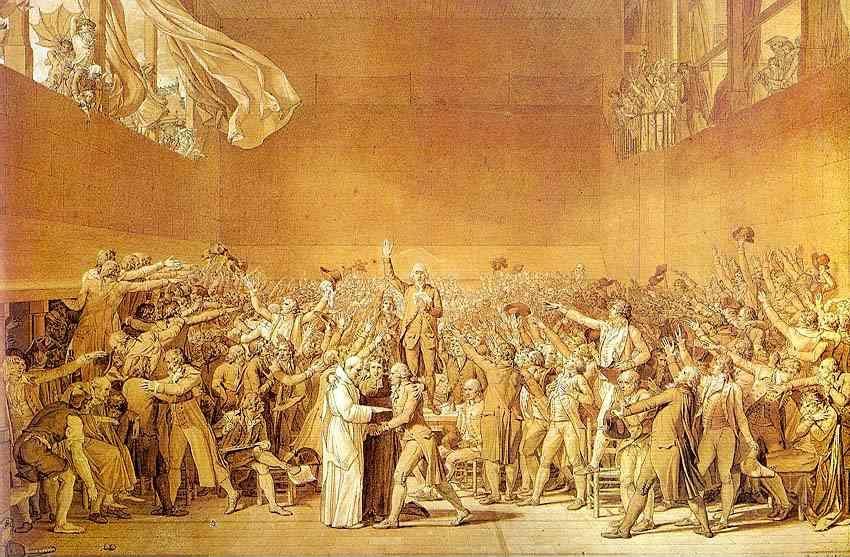 A student in the Early Modern Europe class knows more about this painting than I do , having studied it in Art History, and kindly corrects some of the statements I made about it (click it to see it larger).
A student in the Early Modern Europe class knows more about this painting than I do , having studied it in Art History, and kindly corrects some of the statements I made about it (click it to see it larger).For the benefit of the rest of the class I post part of her e-mail, with permission.
The central figure in the drawing is in fact the Assembly President Jean-Sylvestre Bailly, not Sieyes as you thought. You are correct in saying that the men below represent the creation of a new order. These men are three ecclesiastics, and members of the Third Estate, who joined the revolution. From left to right they are: A Carthusian Monk named Dom Gerle, who was not present at the original gathering, Abbe Gregorie and Rabaut Saint-Etienne. They stand for the regular and secular clergy and the Protestant Church. In addition, right of Bailly is Robespierre.Thanks, the correction is very much appreciated! Further reading, from the same correspondent:
The people above the assembly are the witnesses of this event. As well, the drawing is littered with Freemasonry symbols, of which David was a member. As you may know Freemasonry helped spread the liberal ideas fueled by the revolution. Common imagery used in revolutionary art was the all-seeing eye (representing vigilance) and the square or level (representing equality).
You mentioned how this drawing is reminiscent of David's Oath of the Horatii, yes this is true, he saw this drawing as an expansion on ideas expressed in the Horatii; the heroes in the Horatii are represented in a modern context as the deputies present at the assembly.
Lee, Simon. David. London, England: Phaidon Press Ltd., 1999.I'm fascinated by David and am glad to have the reference.
No comments:
Post a Comment